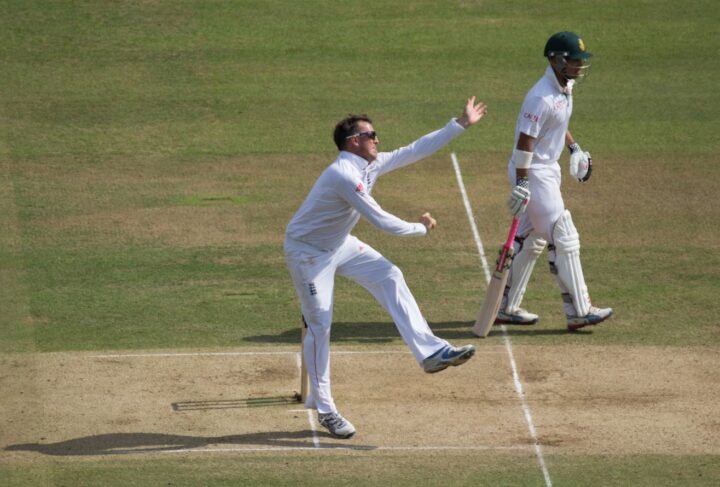When Rehan Ahmed was selected for the 3rd test against Pakistan in December, he became England’s youngest ever Test cricketer. At 18 years and 126 days, he beat the record set by Brian Close in 1949. It’s difficult to imagine any sporting record lasting for 73 years, but shows how cautious England have been in blooding youngsters. Test nations on the Indian subcontinent regularly cap teenagers. Ahmed took 5-50, the youngest test debutant to achieve a five wicket haul. It strengthens the adage that ‘if you’re good enough, you’re old enough’. But it also presents a dilemma; is it wise to throw talented young players in at the deep end?
In those far off days when the red ball game was king, players would be carefully nurtured through the county system. A Test debut would not be contemplated until well into their twenties. Conversely, the white ball variants will fast track players with little or no experience of the domestic game. Ahmed’s nerveless debut as a leg spinner belied only 4 first-class appearances for Leicestershire.
But an audible note of caution sounded as he was omitted from the squad to tour New Zealand in February. Instead, England’s prodigy was dispatched to the UAE T20 League in preparation for the white ball series against Bangladesh. Immaturity can be a powerful weapon in a young player’s armoury. They have no fear of failure or concept of scrutiny that rides on the back of defeat. But sometimes the pressure of expectation can crush a player’s confidence regardless of his ability or potential.
When Brian Close made his debut as a fresh faced 18-year-old, he had played only a handful of first-class matches for Yorkshire. The young all-rounder scored a duck and took 1-85 in an underwhelming debut. Although he completed the double that season of 100 wickets and 1000 runs, it marked the beginning of a sporadic Test career. A grand total of 22 test appearances were spread over 27 years. But this owed more to his belligerence and combative personality than premature elevation to Test status.
In 146 years of test cricket, England have capped only seven teenagers, of whom Close and Ahmed were the only 18-year-olds. The rest were a mixed bag who enjoyed contrasting fortunes as Test cricketers. The first teenager to make the grade was Surrey all-rounder Jack Crawford who made his debut against South Africa in 1906. He was the whiz kid from Repton School who unusually wore spectacles when he played cricket. Sepia tinged images reveal a youthful, almost fragile looking player who packed a most aggressive batting style. A total of 12 Test appearances belied his outstanding ability as a batsman and off-spinner. However, a dispute with Surrey and the selection of professional players curtailed his domestic career whilst still in his early twenties.
Ian Peebles broke into the Teen Club under the most peculiar of circumstances. He ostensibly took a job as administrator in a cricket school run by former South African cricketer Aubrey Faulkner. He soon impressed with a nifty line in leg breaks and googlies. Time and chance took a hand as he was asked to join the amateurs in the Gentlemen v Players match of 1927. Although performing modestly, he was asked to join England’s party for the tour of South Africa later that year.
He played four Test matches in that series and secured an almost unique distinction. Peebles made his county debut for Middlesex in 1928; a full year after his test debut. He was later selected for England in the Ashes series of 1930. Peebles dismissed Don Bradman for a paltry 14 runs in the 4th Test. The Don later paid him the ultimate compliment, “for the first time I was unable to detect a bowler’s leg break from his bosey (googly). I watched Peebles as closely as I knew how, but there was no use”. Like Crawford, he was something of an unfulfilled talent and played in only 13 test matches.
Denis Charles Scott Compton is one of the greatest cricketers of his generation; and versatile enough to also enjoy a top flight football career with Arsenal. He made his county debut for Middlesex in 1936 and took his Test bow against New Zealand the following year. Compton scored his maiden Test century against the Don Bradman led Australia in 1938. A further century against the West Indies at Lords confirmed his credentials as a world-class batsman. However, three months later war was declared against Germany. Compton enlisted in the Royal Artillery and was posted to India. Like many sportsmen of his generation, the war robbed him of six prime years; and he would surely have amassed more than the 78 test caps he eventually received.
Compton resumed his first-class career after the war and found a colossal vein of form. He enjoyed a series of golden summers that cheered the war-weary crowds. In 1947 he scored 3,816 runs and hit 18 centuries, which remains a record for a single season. To finish with a batting average of 50 at both Test and county level shows remarkable consistency. It easily makes him the most successful member of the Teen Club.
Ben Hollioake is probably the saddest example of unfulfilled potential in English cricket. The Surrey all-rounder made his test debut aged 19 years and 269 days against Australia in 1997. Hollioake had announced his arrival scoring 63 off 48 balls in an ODI earlier that summer. But he was left wanting against the Aussies and Sri Lanka the following year. Hollioake scored 44 runs and took 4 wickets in two Test matches. It may well have been a case of too much too soon; some progress was made in ODIs after the dalliance with Test cricket. However, a horrific car crash tragically ended his life in 2002 and we were left to wonder what might have been.
Haseeb Hameed made his Test debut for England two months shy of his twentieth birthday in November 2016. He became the youngest debutant to open an England innings and quickly made his mark. He scored 31 and 82 in the first Test against India. The latter is his highest test score to date and he has played intermittently since then. Hameed sits in the ‘unproven’ camp, but at 26 there is surely more to come from the Bolton born right-hander.
With the exception of Denis Compton, the seven members of England’s Teen Club remain unproven or unfulfilled for a variety of reasons. England certainly doesn’t compare favourably to other Test nations; and the all-time list of youngest test cricketers makes interesting reading. Rehan Ahmed and Brian Close are placed 53rd and 58th respectively. Only nine of the top 50 come from Test nations outside the Indian sub-continent.
Whilst many have enjoyed highly successful Test careers, few have attained true greatness in the game. There are spectacular exceptions to the rule where the pressure is comfortably taken in their stride. Sachin Tendulkar made his Test debut for India aged 16 years and 205 days. The Little Master made 200 test appearances scoring 51 centuries at an average of 53. Gary Sobers was 17 when debuting for the West Indies against England in 1954. The future knight scored over 8,000 Test runs and took 235 wickets. But some young bloods couldn’t cope with the attention that early selection inevitably brings.
Hasan Raza of Pakistan became the youngest Test cricketer. He was 14 when he played against Zimbabwe in 1996. Debate raged as to the accuracy of his age and validity of the new record. Wherever the truth lay, Raza was a young boy who failed to cope with the limelight. He played in 7 Test matches spread over nine years with a meagre batting average of 26.
There are many factors in the psychology of selecting a young player for the senior team. Is he simply an outstanding individual talent that puts him ahead of older, more experienced players? Or perhaps the sign of a limited talent pool that elevates him to early prominence. Whilst much can be gained from a young player training with the senior squad, it’s a gamble to select a player who is still learning the game. They might rely on raw talent but confidence really comes from experience.
England’s management appear to be playing the long game with Rehan Ahmed. He made his Test debut overseas, away from the close scrutiny of a Test series on home turf. Then he was dispatched to the relative obscurity of the UAE T20 league. England, therefore, seem to prefer the ‘slowly but surely’ approach to the brutal ‘sink or swim’ method.
Brian Penn









England have always been cautious about blooding youngsters at the top level because talent isn’t enough. You need to know your game and that’s a much more difficult thing to find in English conditions. Players, especially in the sub continent, always seem to mature faster than here, bowlers and batsmen alike, but they don’t seem to have the lasting careers that English players do, so it’s swings and roundabouts.
I don’t think the selectors should have a blanket approach / policy to this dilemma. It should depend on the individual player. The likes of Cook and Root excelled immediately at Test level (at young ages) whereas others might not have the maturity and it can do more harm than good. I don’t know too much about Rehan but it’s probably best to be cautious with a young leggie. It depends on the player’s role, too. I’d suggest the potential damage to a young spinner (especially a wrist spinner) could be higher than say a fast bowler or even middle order batter.
The stated ages of many Pakistan players in the past are often ‘guesstimates’ and best taken with a pinch of salt.
Rabada and Williamson are two young debutants who are in the process of making strong careers. Vettori was very young when he first played.
A strange one is players who debuted young as one type of player but became very different – for example Sobers was regarded as a spinner when he first played and Majid Khan was a tearaway fast-bowler until a back injury struck.
Often a very young debutant merely shows that a team was desperate for a certain sort of player. NZ were desperate for a quality spinner when they capped Vettori as were SA when they capped Paul Adams. There have been quite a few successful young spinners with Harbhajan, Mushtaq and Saqlain further examples to ones already mentioned. England have generally been reluctant to select young spinners although Derek Underwood was picked young and immediately successful.
Underwood was unique, almost a seamer as opposed to a spinner, so there wasn’t as much strain on his wrist or fingers. Also he began his career on uncovered wickets, which was an enormous help initially.